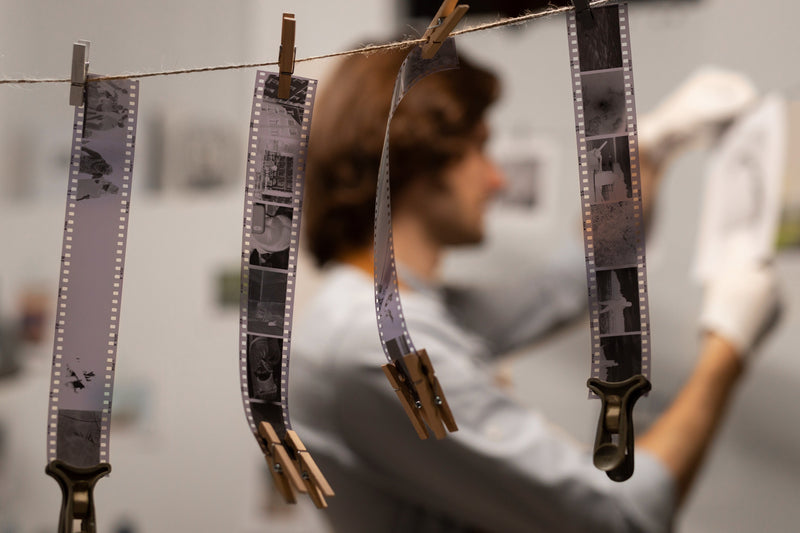Embracing the tactile, the real and the analog in a digital world.
The analogue resurgence is quietly global
In 2025, amid the hum of new digital cameras and AI-driven workflows, something old-school is gaining unexpected momentum: film on film. According to IndieWire, at least 21 feature films this year have been shot on celluloid—35 mm and larger formats—among them titles like Jurassic World Rebirth and The Smashing Machine. IndieWire+1 And it’s not merely nostalgia: as Fstoppers recently observed, “film photography in 2025 isn’t about rejecting technology—it’s about choosing a different relationship with it.” Fstoppers+1
For a lab like CPC London—which offers film processing, scanning and restoration—this trend isn’t just aesthetic, it’s operational. It signals renewed demand for film-stock logistics, high-resolution scanning, archival workflows and analogue finishing touches.
Directors and cinematographers lighting the celluloid torch
It’s telling that this year’s news includes an historic milestone: Autumn Durald Arkapaw became the first female cinematographer to shoot a feature on large-format IMAX film for Sinners—a project using both IMAX and Ultra Panavision 70 formats. AP News Meanwhile, the forthcoming Christopher Nolan film The Odyssey is set to be the first movie shot entirely on IMAX film, pushing the envelope of format once again. The Verge
These examples reflect a broader truth: shooting on film is increasingly a deliberate creative choice, not a fallback or glorified gimmick. The texture of emulsion, the imperfections, the frame-by-frame integrity—they all still matter. For labs like CPC London, and film-stock labels such as ORWO and Ferrania, that means a revival of the entire downstream ecosystem—of processing, scanning, archiving.
Restoration, scanning and the human-vs-machine debate
At the same time, restoration has re-entered the spotlight as a creative act—as much about archival value as about aesthetics. As the Brooklyn Rail notes: “Much coverage of the digital versus analog film restoration debate misses the fact that the battle is already over—or, at the very least, close enough to call.” Brooklyn Rail The implication: film can be digitised, enhanced, scanned—but the material journey still carries a human signature.
It’s here that CPC London’s scanning and restoration services matter. Whether it’s film-to-digital conversion, archival grading, or preservation of original negatives, the “human touch” in decision-making remains vital. Perhaps paradoxically, in an age of AI, the analogue gesture becomes the counter-point: choosing what to retain, what grain to preserve, what imperfection to allow.
Why this matters for filmmakers, labs and the industry
Choice of medium defines the workflow. When a production opts for 65 mm or 35 mm film, the decision immediately engages lab scheduling, processing chemistry, scanning resolution and deliverables. A sound-stage such as Black Hangar Studios in the UK may host the shoot—but the off-stage chain of processing and post remains equally essential.
Film-stock viability is re-emerging. With ORWO and Ferrania reactivating manufacturing and independent labs proliferating, the ecosystem of analogue production is not dead—it’s evolving. That means film labs, scanning houses and archival partners are again strategic collaborators rather than optional extras.
Authenticity and archive-value matter. Audiences and archivists alike appreciate a tangible film print—grain, halation and all. Original film capture, combined with digital scanning and restoration, produces work that stands the test of time. For CPC London, the slogan might well be: film processed, scanned, restored—and preserved for generations.
Human & analog vs. purely digital workflows. The choice to shoot film or preserve original film elements is itself a statement. In a world of unlimited digital takes and instant gratification, film says: this matters. The decision to keep emulsion, to incur cost, to scan at high resolution—signals that craft and care still count.
A brief case study in intent
Consider a project that shoots on ORWO black-and-white stock, processes it through CPC London’s trusted pipeline, then scans at 8K or 12K resolution for restoration or digital finishing. The result: an image with the texture of film, archival future-proofing, and digital flexibility. The journey combines heritage and innovation—not a compromise, but a convergence.
Final thoughts
In 2025, the analogue film revival is more than a whisper—it’s a substantive thread weaving through modern cinema. From feature shoots shot entirely on film, to acclaimed restorations, to labs and scanners leaning into the challenge, film is not just surviving—it’s re-emerging. For filmmakers who care about craft, for labs with the infrastructure, and for viewers craving authenticity, this is a moment of alignment.
If you are a filmmaker, cinematographer or archive-manager considering a project on 35 mm or 65 mm, or planning scanning, restoration or printing workflows, turn to CPC London. We specialise in film processing, high-resolution scanning, printing and restoration—so you can make your vision real, analogue-rich and digitally future-proof.
#ShotOnFilm #CelluloidRevival #FilmRestoration #AnalogueCinema #FilmProcessing


